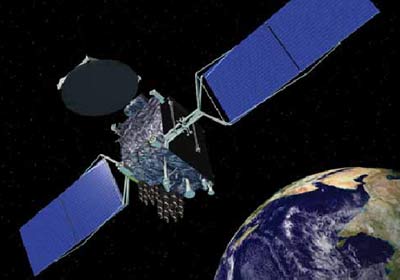Galaxy 15 (original) (raw)

Galaxy 15 [OSC]
In early 2001, Orbital was selected to supply one C-band GEO satellite designated Galaxy 12 to be located at 72� W longitude. In late 2001 PanAmSat exercised an option for two additional C-band spacecraft. Design and development of the Galaxy satellites are under way at our Dulles, Virginia, campus. The satellites will distribute entertainment and information to cable television systems, TV broadcast affiliates, direct-to-home TV operators, Internet service providers, telecommunications companies and corporations.
In the autumn of 2003, PanAmSat Corporation, modified its contract with Orbital for Galaxy 15, the third Star-2 spacecraft under construction for its North American fleet. A second U.S. Government sponsored L-band Wide Area Augmentation System (WAAS-GEO 3) payload was added to the satellite's original C-band commercial payload as part of the Geostationary Communications and Control Segment (GCCS) program being integrated by Lockheed Martin for the U.S. Federal Aviation Administration. Galaxy XV relays Global Positioning System (GPS) navigation information to in-flight aircraft, providing super-accurate guidance to pilots at thousands of airports and airstrips where there is currently no precision landing capability.
In 2010 Galaxy 15 stopped reacting to ground commands and began drifting along the geostationary arc, with the transponders still broadcasting. After a monthslong journey, the batteries were finally drained in December 2010 leading to a reset of the systems. After that, control was regained over the satellite.
In August 2022 Intelsat again lost the ability to command its Galaxy 15 satellite after an anomaly caused by a space weather event. The anomaly caused the loss of commanding links, which lead to the satellite drifting off its station. In September the communications payload was shut down to avoid interference.
The satellite was already to be replaced by Galaxy 33 under the C-band transition program.